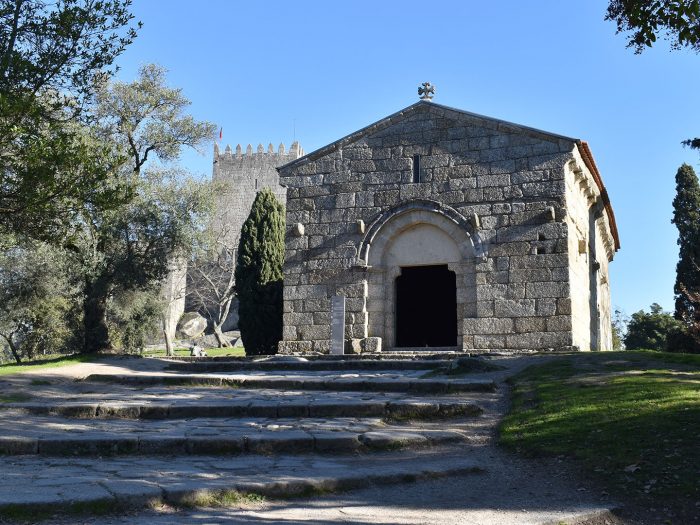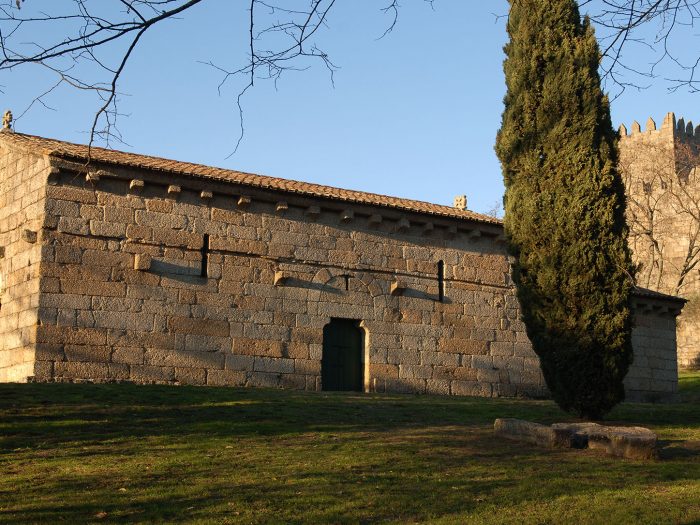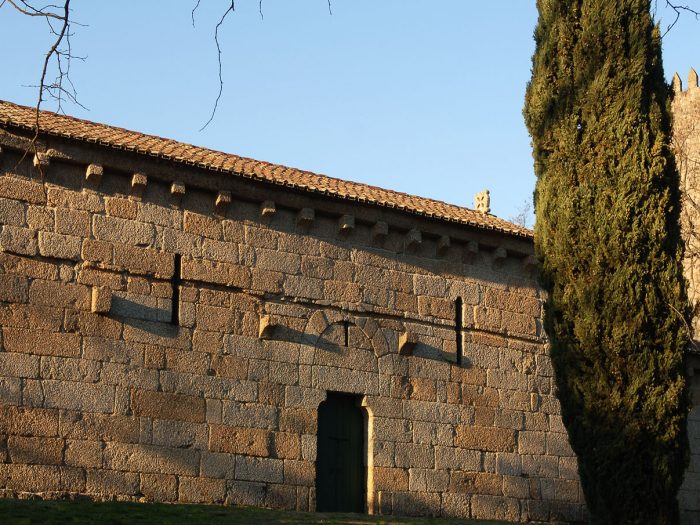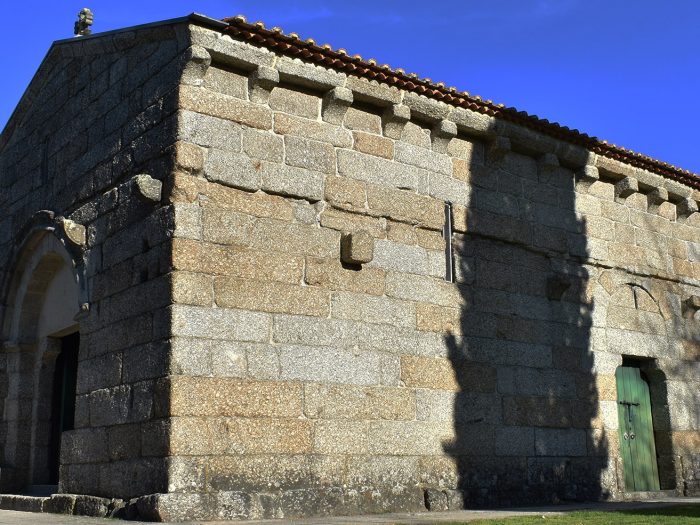Church of S. Miguel
The oldest document mentioning this church dates from 1216, but it isn’t mentioned in the 1220 Enquiries.
In 1239, the temple was consecrated by the archbishop Silvestre Godinho, according to a missing inscription.
In the 1258 Enquiries the Church is designated as of S. Miguel but, in 1285, it is named as of Santa Margarida (St. Margaret). Over the centuries, both names were in use.
In the Middle Ages, several local administration sessions were held under its porch, thus becoming a location for governance and sociability.
In 1664, Prior Diogo Lobo da Silveira removed the Church’s baptismal font and took it to the Church of Our Lady of Oliveira. . It is believed that the 1st Portuguese King – Afonso Henriques – was baptized in it.
In 1872, the bell tower and elements from the front facade collapsed.
In 1873, given its decay and the Church’s symbolism – the association to King Afonso Henriques – the municipality unsicessfully tries to get its guardianship.
It was then issued a public subscription in order to assure the restoration and the works began in August, 1874. 700.000 réis were raised through public subscription, 1.200.000 réis through governamental grant and an undetermined sum was granted by Francisco Martins Sarmento.
In this re-qualification, held between 1874 and 1880, the lateral altars were removed (one was devoted to Our Lady of Grace and the other to St. Margaret) and the chancel arch, that had been replaced in 1795, was substituted by another better suiting the original medieval style.
In 1910, the Church of S. Miguel was classed as a National Monument (Diário do Governo, no. 136, June 16, 1910).
In 1927, the above mentioned baptismal font that had been removed in 1664, returned to its place of origin. It returns for the same reason it had been removed: so it would be cherished as where the place where 1st Portuguese King – Afonso Henriques – was supposedly baptized in.
In 1928, the sacristy, which had been added in an undetermined period, was demolished. However, the door that led into it was kept. These works were led by the DGEMN (Directorate General for National Buildings and Monuments), under the direct supervision of the architect Baltazar de Castro, granting the recovery of the roofs, fissure repairs and the removal of roots from a sycamore that were compromising the structure.
Betweeen 1938 and 1940 there was a new intervention under the DGEMN.
In 1952, the Diário do Governo (official Portuguese gazette at the time) classed the Guimarães Castle, Church of S. Miguel and the Ducal Palace as Special Protection Areas. This status was revised and considerably extended in 1955.
A Romanesque Church
The small Church of S. Miguel is, according to Manuel Monteiro, «clearly a typic Romanesque construction considering its core, the door design, cornices and cantilevers».
It is a small temple in crude local granite, without great decorative finery, of rectangular layout, with only one nave, the apse is also rectangular, there are no stonemason marks and the ceiling is made out of wood. The design is similar to many other churches of the time.
The crossing’s arch isn’t the original one for it was replaced in 1795. During the restoration held between 1874 and 1880, the arch mas demolished and a new one was built trying to replicate the medieval arch. According to Manuel Monteiro, although the care in this restoration, the crossing’s arch should have been made after the one of the main door, therefore with a pointed arch.
The church has three doors: the main door and two on each of the sides.
The illumination inside is granted through six narrow gasps: one, in the apse; another, above the main door; and two in each of the lateral walls.
The building has no columns nor adorned chapiters, the tympana are plain and the cornices are simple.
Inside the monument, one may still see ten of the twelve crosses that were used to consecrate a church.
In the past, the church had a retable in the apse and two althars in the nave on the crossing’s arch.
The apse’s retable was kept during the 1874-1888 works but, in the 1938-1940 ones, it was removed and replaced by an stone altar.
In the exterior west nave’s wall, there are two embedded arcosolia. It is believed that they are the resting place of the chantre Martim Pais (who passed away in January 5, 1223) and of the prosecutor João Anes Enxate.
It is believed that around the church there was a porch.
In the course of centuries, the Church of S. Miguel was a burial ground. This is clearly noted due to the considerable set of tomb lids inside the church and, formerly, outside.









